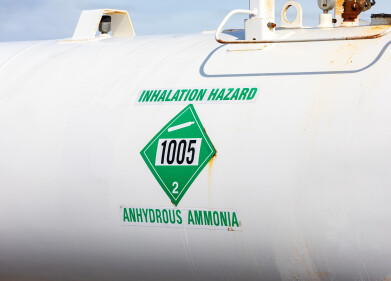Hydrogen fuel
What Are the 4 Main Types of Hydrocarbons?
Feb 25 2021
Hydrocarbons are naturally occurring organic molecules in our environment which can be harvested and combusted to create energy. As the name suggests, hydrocarbons are made up of just two elements: hydrogen and carbon. In general, the carbon atoms are surrounded by hydrogen atoms to create the molecule structure. There are four main different types of hydrocarbons, which are classified as alkanes, alkenes, alkynes and aromatic hydrocarbons.
Alkanes
Alkanes are the simplest type of hydrocarbon, containing single bonds of the two elements. They are considered true hydrocarbons, since there are no other elements contained within in. Alkanes are defined by the molecular formula: CnH2n+2, where C represents carbon, H stands for hydrogen and n refers to the quantity of carbon atoms.
The three most common and least complex alkanes are methane (CH4), ethane (C2H6) and propane (C3H8). Like all other hydrocarbons, alkanes are excellent sources of fuel – but can be damaging to the environment when combusted. Methane monitoring is particularly important, given the huge global warming potential (GWP) of that gas.
Alkenes
Like alkanes, alkenes are also true hydrocarbons with no other elements in their makeup. By definition, alkenes contain at least one carbon atom for every carbon double bond in their chain. Alkenes are defined by the molecular formula: CnH2n, where C represents carbon, H stands for hydrogen and n refers to the quantity of carbon atoms.
The most common and least complex alkenes are ethene (C2H4) and propene (C3H6). The double bond is what differentiates an alkene from an alkane and its exact position in the molecular chain can create different bonding structures.
Alkynes
Again, alkenes are true hydrocarbons which contain only hydrogen and carbon. However, they differ from alkanes and alkenes in that they contain a triple bond between two carbon atoms. Alkynes are defined by the molecular formula CH2n-2, where C represents carbon, H stands for hydrogen and n refers to the quantity of carbon atoms.
The three most common and least complex alkynes are ethyne (C2H2), propyne (C3H4) and butyne (C4H6). All alkynes contain the suffix -yne, meaning they can be easily identified in comparison to other types of hydrocarbons.
Aromatic hydrocarbons
Aromatic hydrocarbons are also true hydrocarbons containing only hydrogen and carbon. They are more complicated than the other types of hydrocarbons mentioned above and can adopt various structures. They are called aromatic due to the fact that they have a tendency to have a strong smell attached to them.
The most common and least complex aromatic compound is benzene (C6H6). Benzene (and many other aromatic hydrocarbons) are found in fuel sources such as gasoline, diesel and kerosene. The concentration of aromatic compounds may be increased in a fuel source to increase its octane rating, which enhances the fuel’s ability to resist knocking.
Digital Edition
PIN 26.1 Feb/Mar 2025
March 2025
Analytical Instrumentation - Elemental Analysis for Quality and Process Control at Refineries, for Lubricants and Wear Metals in Engine Oils - Synthetic Lubricants: New Developments - Scaling...
View all digital editions
Events
Apr 22 2025 Hammamet, Tunisia
Apr 22 2025 Kintex, South Korea
Solar & Energy Storage Summit 2025
Apr 23 2025 Denver, CO, USA
Apr 27 2025 Portland, OR, USA
Apr 29 2025 Mumbai, India



















